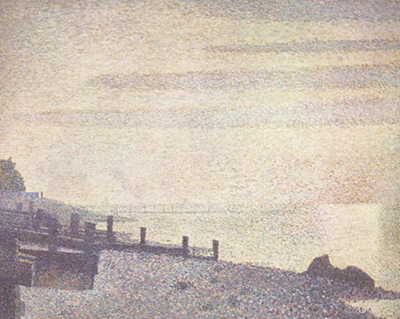Georges Seurat was a talented post-impressionist artist. His famous works used chromoluminarism and pointillism techniques. He had a vast knowledge of oil and canvas paintings and Conte crayon drawings. The artist boasted a great artistic personality, delicate sensibility, a deep passion for logical abstraction and a mathematical precision for the mind. He began his painting career in 1883 where he made a huge canvas painting and titled it, ‘Bathers at Asnieres’
The renowned oil and canvas artist spent the summer of 1886 in Honfleur. Most of his time was on the Northern French coast. The area is frequented by turbulent seas and beautiful shorelines that attracted a massive crowd of tourists. According to sources, he said that he needed to wash the light of the studio from his eyes. However, from the ‘Mouth of the Seine at Honfleur, Evening’, the artist portrays a peaceful and still scenery. The sky is visible from the tranquil sea and brings a sense of ample lighting in the portrait. Still, waters can also be seen, and there seems to be a solid figure on the bottom right side of the picture. Most viewers thought of it as a rock.
In this painting, the artist used his readings to bring out a systematic technique and to form small spots of pure colours. It also has over twenty colours in the form of over a thousand dots carefully put on the canvas. The portrait has long bands of clouds, melting into the horizon and blending in with the breakwaters of the beach. The sky then pulls down to meet the horizon line and brings in the illusion of spacious light. This is pointillism and creates a magical shimmer to the viewer’s sight. The painting observes a grey dust colour theme with the skies filled with hardly visible matter. He uses illusion to bring out the deserted scene and a transition between the world of reality and painting. He uses different shades of grey to bring the skies; the lower areas are darker and lighten on the way up.
Later, the painting added a wooden frame and hand-painted it with the same pointillism techniques. It got a better look and got more luminous. His other famous works include La Grande Jatte, Study for a Sunday on La Grande Jatte, and the Circus Sideshow. In his painting years, the painter was able to create new paintings showing a technical interest in the works. His work is celebrated and can be found in Paris exhibitions such as Musee d’Orsay and the Chahut.




